10 Christmas Stories That Capture the True Magic of the Season

Look at yourself in the mirror. Yeah, right in the eye. See that little fold of tissue in the inner corner of both of your eyes? Well get ready for this, it was actually once a third eyelid, or nictitating membrane. You can see it today in snakes or lizards, for example.
The third eyelid was used for the same purpose as the other two, although it’s unclear whether humans ever even had it fully grown. This membrane wasn’t as thick as the two eyelids we have, and it could moisten the eye without obstructing the view. Right now, all that we have left of it is this tiny fold in the corner of the eye, and most likely, in the future, we will lose it altogether. And maybe we’ll finally stop waking up with that yucky crust that forms in our eyes overnight.
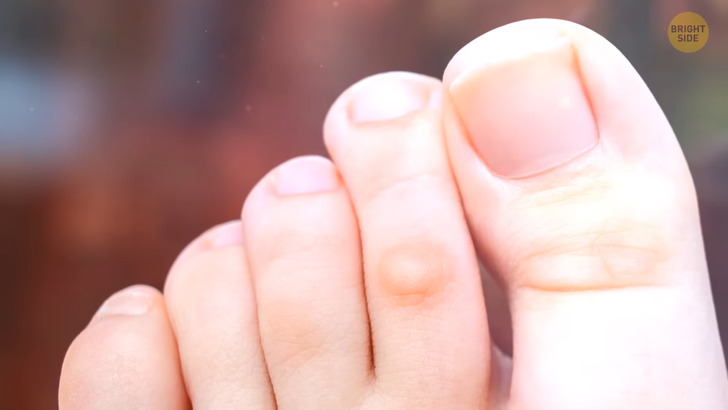
Now, while you’re still in front of the mirror, look lower... lower... and lower still. Yeah, those are your toes, say hello — and goodbye. Scientists believe that, in some more or less distant future, we’ll get rid of our toes completely.
Our ancestors, the ancient primates, needed toes to climb trees more efficiently: they used both their hands and feet to grasp tree branches. You can see it today in most monkeys and apes — they have longer and more flexible toes along with flappier feet that allow them to get a hang on branches. Their feet mobility also lets them grab objects from the ground if necessary. For us humans, even lifting a pen we dropped on the floor with our toes is a complex task, but not for our primate relatives.
Humans have evolved along a different route: we started walking upright and climbed down from trees, making rigid feet and shorter toes more of a necessity over time. Today, we still use our toes for balance when rolling from the balls of our feet to the tips of the toes, but our balance is now much more centered. It first moved towards our inner feet, which resulted in our pinky toes becoming so tiny — and the big toes, well, so big. As the balance moves away from the toes entirely, though, they are more likely to get fused together in the future.

Now turn around and look at your gorgeous behind. If you’ve ever fallen off a skateboard or slipped on an icy patch, you must remember what a terrible thing it is to hit that tailbone on a hard surface. Luckily for us, scientists predict it’s going to go away pretty soon in the course of evolution.
Tailbone is a feature that was left to us by our primate ancestors too. And yet again, they needed their tails to achieve more mobility among tree branches, using them to fling themselves from tree to tree. It’s hard to say when humans dropped the tail to never pick it back up, but facts are facts: the only thing we have reminding us of those glorious tree-jumping days is the pretty useless bone at the lower end of our backs.
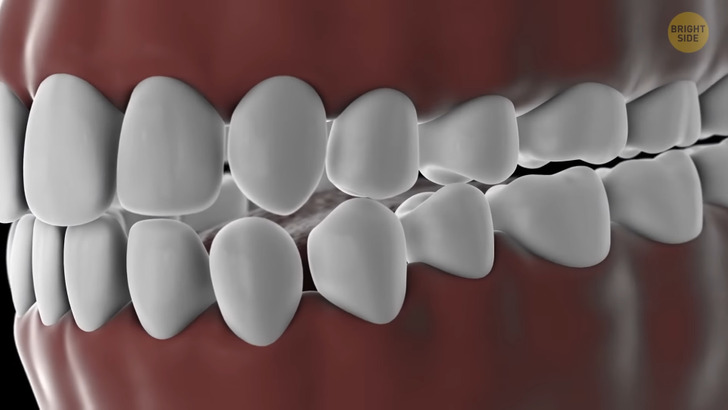
Okay, back to the face now. Open your mouth and say “Aaahhh”. If you’re a lucky individual to have no wisdom teeth, then you can be proud knowing that you’re a product of evolution going strong!
As you might know, teeth are the only part of the human body that doesn’t repair itself. So if you lost all your teeth back in the dark times with no dentists around, the only choice you had was to eat liquid food. Not cool. Scientists believe that nature gave us wisdom teeth as a replacement for older, worn out teeth we’ve had since childhood. That’s why they grow so late in our lives.
Today, though, with all the progress dentistry has gone through, we tend to keep all or most of our teeth intact until a very old age. And even if we lose some, we can always replace them with new ones. That makes wisdom teeth a vestigial thing, and they seem to understand that, since more and more people never have to go through the ordeal of teething as grownups.
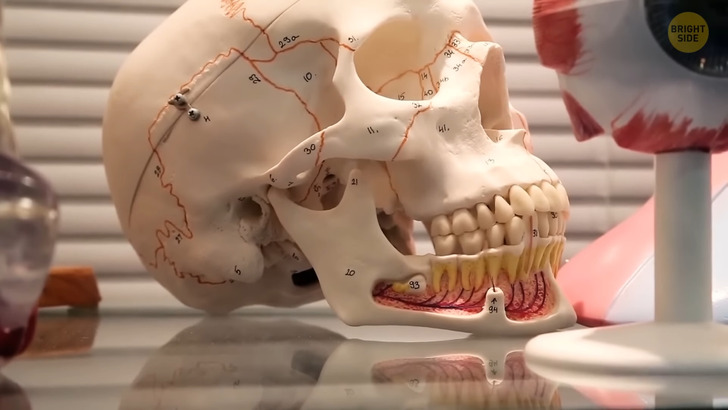
Speaking of teeth, our entire jaw has been changing for the past 10,000 years and is predicted to change even more quite soon. In fact, it’s been the fastest changer of all our body parts. Back in the day, when early humans survived by hunting and gathering, they needed massive, powerful jaws and bigger teeth to chew through raw meat and grind plants. As they came to cooking and then farming, their food became less tough, and so their jaws became smaller to fit the current needs.
As time went by, our jaws shrank more and more, and they’re likely to continue doing so in the future. With lots of processed foods that don’t need much chewing, humans of the future are probably going to have more delicate facial features with thin jawlines and smooth cheekbones.

Some body parts are not going away but making a comeback instead. A hundred years ago, fabella, a tiny bone in the back of the knee, was only present in around 11% of people, and scientists thought it would disappear entirely pretty soon. But against all odds, the brave little bone has made it into the knees of a whopping 39% of modern people.
It’s still unknown why exactly the fabella returned, but the most popular opinion is that we’ve grown taller and heavier than our ancestors. That much is true: as our diet became better and more nutritious, we learned to live longer and grow taller. We’re now probably at the peak of our evolutionary height. And the fabella might have appeared in our bodies to provide a smooth surface for the tendon behind the knee to slide on, reducing friction and lowering the chances of damage because of wear and tear.
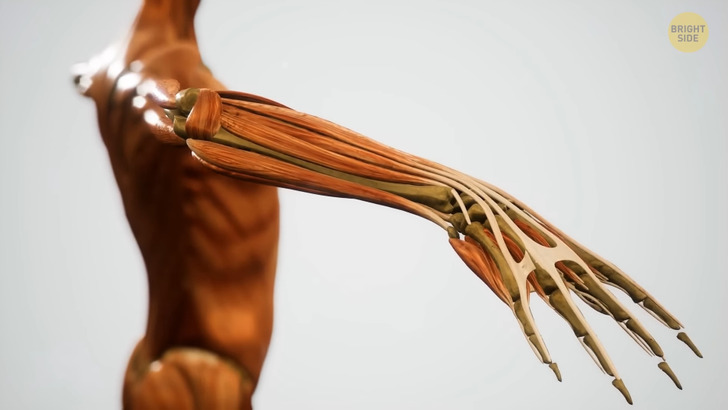
Speaking of becoming bigger, let’s get you back to that mirror, shall we? Flex a little bit — nice biceps there! But unfortunately, not as nice as your ancient ancestors were. Not everything about evolution is 100% good for us, it’s just a set of features that adapted best. And that’s the case with our muscles: they’ve grown smaller and weaker with time, especially in our upper bodies.
In ancient times, humans needed big and strong muscles to do a lot of handiwork: from hunting and schlepping their catch home to crafting tools and building shelters. Later, it didn’t grow easier, much the opposite, in fact: plowing fields and building complex structures required a lot of physical strength and endurance.
But as technological progress started booming, physical capabilities gave way to brainpower, and machines began doing a lot of work for us, most of it even better than us. We shifted more towards a sedentary lifestyle, spending more and more time in front of computers. And our muscles have been growing steadily smaller because we simply don’t need them as much anymore. It’s highly likely that, as the progress goes further, we’ll become much slenderer and have more trouble gaining muscle mass.
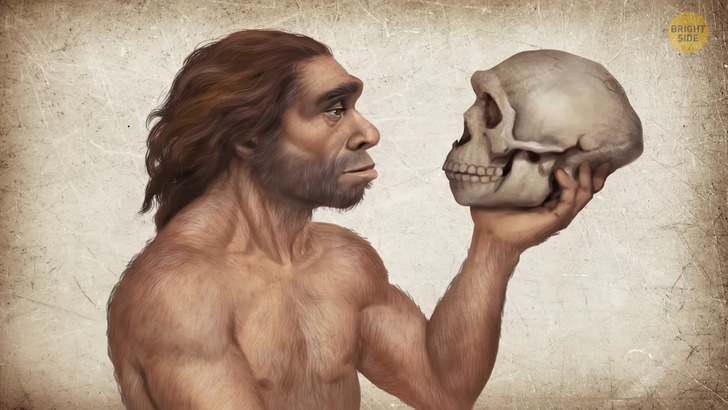
Our brain is of particular interest because it’s been changing in a kind of strange pattern. Our distant ancestors had a rather small brain at first, but the close relatives of humans, the Neanderthals, obtained a larger brain than the average modern human has. In the course of evolution, the human brain grew larger, but in the more recent centuries, it’s started shrinking, and no one knows exactly why.
Some experts say it might have to do with the change in our lifestyle and social connections. Early humans, especially hunter-gatherers, had to remember every plant and animal they saw, their properties, and how to use this or that thing. They were more generalist, having to learn everything their parents knew and find out more on their own.

The modern human is more specialized in a certain area, delving deeper into some narrow subject while relying on their peers for the rest. Where ancient humans worked in groups in which anyone could potentially replace anyone else, we gather in teams where each member has their own specific task and is irreplaceable.
Still, brain size doesn’t seem to matter that much, because orcas and elephants, for example, have bigger brains than us, which doesn’t make them more intelligent. Happier? I’m guessing yes. And if we venture farther into the unknown, meaning millennia from today, we might even develop some pretty unbelievable traits. Some go as far as to say that, if the tendency for the sea levels to rise persists, humans might adapt to living in water! We might evolve to have webbed hands and feet to swim better and develop gills to be able to breathe underwater.

Or, if we go to space and start colonizing other planets, we will inevitably have to adapt to their conditions. Mars, for instance, has lower gravity and a much colder climate. It will probably make humans taller and lighter, but also might cause them to grow much more body hair to keep warm. And planets with stronger gravity and higher temperatures will, on the contrary, turn humans into stocky, sturdy, and likely hairless creatures.
The possibilities are endless. Hey, maybe due to social media, we’ll just turn into little blobs with big eyes and thumbs and not much else — so much better for texting. Hmm. Hope not.











